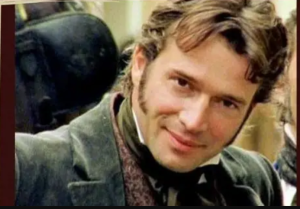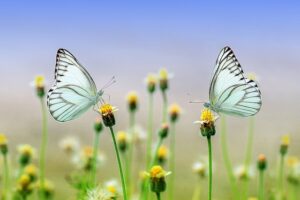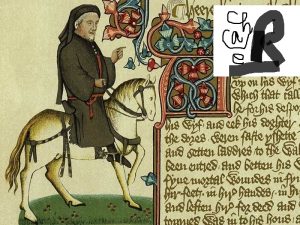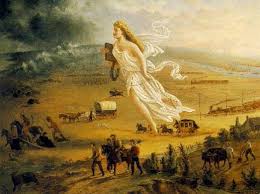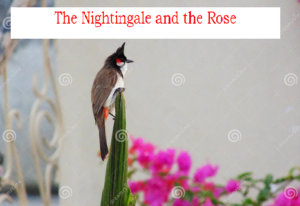THE TYGER by WILLIAM BLAKE
Here goes the text of The Tyger by William Blake followed by detailed analysis and explanation.
Tyger Tyger, burning bright,
In the forests of the night;
What immortal hand or eye,
Could frame thy fearful symmetry?
In what distant deeps or skies.
Burnt the fire of thine eyes?
On what wings dare he aspire?
What the hand, dare seize the fire?
And what shoulder, & what art,
Could twist the sinews of thy heart?
And when thy heart began to beat.
What dread hand? & what dread feet?
What the hammer? what the chain,
In what furnace was thy brain?
What the anvil? what dread grasp.
Dare its deadly terrors clasp?
When the stars threw down their spears
And water’d heaven with their tears:
Did he smile his work to see?
Did he who made the Lamb make thee?
Tyger Tyger burning bright,
In the forests of the night:
What immortal hand or eye,
Dare frame thy fearful symmetry?
Difficult Words
Immortal—Eternal, everlasting. Fearful—Frightening, dreadful, scary. Symmetry—Proportion. Aspire—To aim at, to desire. Seize—To capture, to get hold off. Dread—Terror, awe, fear. Hammer—An instrument for driving nails. Furnace—Fire place. Anvil—Iron block. Grasp—To seize and hold. Terror—Fear, dread. Clasp—A hook, to grasp. Distant—Remote in place or time.
Meaning of the Title—THE TYGER by WILLIAM BLAKE
The title of the poem focuses on its central figure, a tiger, spelled as “Tyger,” employing an archaic term to evoke a sense of the world just after its creation by God. Through this choice, Blake suggests that long before humanity came into existence, God meticulously crafted His creation with symmetrical precision. The tiger symbolizes the awe-inspiring yet destructive aspect of the Creator, echoing themes found in Percy Bysshe Shelley’s revolutionary poem ‘Ode to the West Wind.’
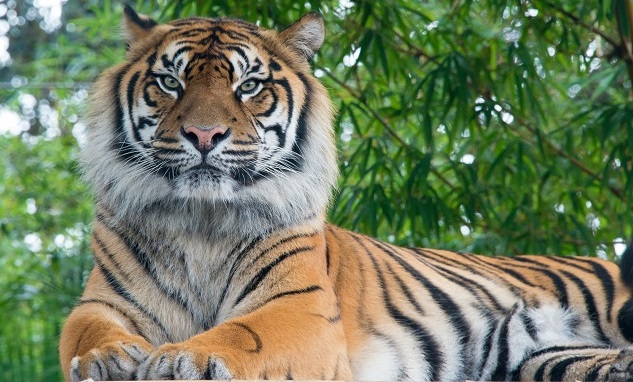
Structure and Form
William Blake’s ‘The Tyger’ comprises of six stanzas, each consisting of four lines, maintaining a rhythmic flow (AABB) with a regular trochaic tetrameter. This rhythmic pattern mirrors the hammering of a blacksmith referenced within the text. The poem’s orderly structure gradually builds towards its central question. Notably, the first and last stanzas mirror each other, with the words ‘could’ and ‘dare’ interchanged. The poem highlights the thirteen question posed by the poet regarding the nature of the Creator.
Literary Devices
Blake employs various literary devices in ‘The Tyger,’ including alliteration, enjambment, and allusion. Allusion plays a significant role, as Blake alludes to the fundamental question underlying the poem: What kind of creator is God if He fashioned such a formidable creature as the tiger? By exploring the tiger’s formidable nature, Blake delves into the darker aspects of life and existence itself.
Alliteration, the repetition of consonant sounds at the beginning of words, is evident throughout the poem, as seen in phrases like ‘burning bright’ in line 1 and ‘frame and fearful’ in line 4 of the first staza. This repetition, combined with the recurring refrain, enhances the poem’s rhythmic quality and memorability. Enjambment, the deliberate breaking of lines before their natural conclusion, adds to the poem’s fluidity and momentum, as observed in the transitions between lines one and two of the second stanza as well as lines three and four of the fourth stanza.
Central Idea
This poem, indicates the amazement at the diversity of God’s creation. Thus the poet, is meditating on the greatness of His powers, which create conflicting things such as the tiger and lamb.
Summary
This is a beautiful lyric from Blake, and has a mystic sense over-shadowing it. The poet wonders at the strength, burning eyes and fierce beauty of a tiger. At this momet, he tries to catch a glimpse of the Power, that created it, by putting on different questions, Thus the poet’s mind is not satisfied and amazed of the tiger. More importantly, it is the divine incomprehensibility which strikes wonder.
Blake describes the glowing eyes of the tiger, the strong sinews and beautiful symmetry of its body. Then he thinks about the powerful hand, which shaped all this. However, he does not stop here, but further on questions whether the same Hand created the tiger,. which created the lamb too. Thus here the poet is amazed at the diversity of God’s creations. God has created many objects and nearly each creation of His has an antagonistic creation. So the poet here wonders at the diverse creative powers of God, and states that His powers are all mysterious.
Critical Appreciation
This lyrical song, is among the most famous and successful of Blake’s. Here Blake shows, a reverential amazement and wonder at the diverse creations of God. In the tiger, the strength, beauty and fiercity of God, is mirrored; while He has created the meek lamb, He has created the stars, the dew drops too. Thus from His creations we can percieve His wrath, anger, power, compassion, beauty, etc.
Explanation
Tiger, Tiger………………………………………….fearful symmetry?
The poet is amazed, at the brightness and shin- ing eyes of the tiger. Thus he addresses, the tiger and says, O! tiger your eyes shine forth in the darkness of the night, I wonder who created you, You have a proportionate and strong body, but the Hand, which created was more powerful than your body. Thus the poet feels proud of the creative genius of God.
In what……………………………………………………….,,,,,,…seize the fire
The poet believes, that an Angle flew towards the remotest part of the Heaven, where a strange fire blazed. This Angle brought back the heavenly blazing fire, and thus God chained it into the tiger’s eyes, This is the reason, why the tiger has such bright eyes. It was ambition, courage, which helped a hand to seze and capture this firc and the poet wonders at the cour- age of this Hand.
And what………………………………………………. dread feet?
The tiger has a fierce and cruei heart, and the poet thinks, about the power and strength of the hand, which bound together the wuscles and sinews_ of the tiger’s heart. Besides, a fierce heart, the tiger has dreadful feet and hands. Thus the poet says that the tiger is fierce from its very birth,
What the hammer……………………………………..terror’s clasp?
In this stanza the poet, describes the ferocious, and dreadful nature of the tiger. He questions again about the forge, hammer and furnace, on which the nature of the tiger was shaped. He imagines, the ex- traordinary instruments were used, while the creation of the tiger was proceeding. However, the poet again ex- presses, his wonder at the power and strength of the hand, which created and controlled this ferocious nature of the tiger.
When the stars…….…………………………………..make thee?
Looking at the fierce tiger what all its strong and beautiful body; Blake thinks about the beauties of nature, and the meek lamb. Perplexed at this he ques. tions God; who he says created the shining stars; and smiled, at the meek beauty of the lamb, did he create the tiger too Here the poet is thinking about the diversity found in this Universe, which is all created by God. He is amazed at the powers of God, which has created so many antagonistic objects.
Tiger fearful………………………………………………..symmetry
After praising the Universal creation of God, Blake returns to his praise of the tiger and says, the tiger’s eyes shine forth in the forest, and when I perceive it, I have a feeling that immortal hands shaped and framed the beauty, strong and fierce body of the tiger.
#The Tyger by William Blake #The Tyger by William Blake #The Tyger by William Blake #The Tyger by William Blake #The Tyger by William Blake #The Tyger by William Blake #The Tyger by William Blake #The Tyger by William Blake #The Tyger by William Blake #The Tyger by William Blake #The Tyger by William Blake
Read More
Wordsworth and His Treatment Of Nature
Wordsworth and His Love for Nature
Introduction to Fiction and Non Fiction
Of Death — Francis Bacon (Text)
Of Truth Critical Analysis by Sir Francis Bacon
Of Truth by Francis Bacon Summary
Visit Us on our Facebook Page:

